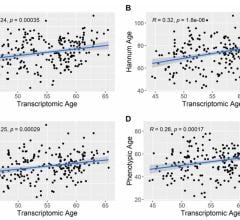
June 23, 2014 — Men who reported being sedentary, with low levels of physical activity, were at a significantly higher risk for heart failure than those who were more active, according to a Kaiser Permanente study published earlier this year in the journal Circulation: Heart Failure. The study showed the increased risk of heart failure with prolonged sedentary behavior.
Researchers examined the electronic health records (EHRs) of more than 82,000 men aged 45 years and older, who were part of the California Men's Health Study. The study participants did not have prevalent heart failure and were enrolled in Kaiser Permanente health plans in the northern and southern California regions. The researchers followed these men for more than 10 years and found that those who reported high levels of sedentary time and low levels of physical activity had 2.2 times the risk of developing heart failure as compared with men who reported high physical activity and low sedentary time.
"Though traditionally we know quite a bit about the positive impact that physical activity has on cardiovascular disease, we know significantly less about the relationship between physical activity and heart failure," said Deborah Rohm Young, Ph.D., study lead author and researcher at the Kaiser Permanente Southern California Department of Research & Evaluation. "The results of this large study of a racially and ethnically diverse population reinforce the importance of a physically active and, importantly, a non-sedentary lifestyle for reducing the risk of heart failure."
Heart failure occurs when the heart is unable to maintain a proper blood flow. It is a serious and major cardiovascular disease that affected about 5.7 million Americans in 2012, according to the American Heart Association (AHA). Though the condition does not necessarily mean that the heart has stopped beating, about half of the people who develop heart failure will die within five years of diagnosis. Primary risk factors for the condition include coronary heart disease, high blood pressure, diabetes, obesity and a lack of physical activity.
"Kaiser Permanente considers physical activity an important part of a comprehensive approach to patient wellness and has included exercise as one of the patient's vital signs for several years now," said Young. "Hopefully, this study will provide even more evidence that moving more and sitting less can be prescribed for better health."
Kaiser Permanente is one of the first healthcare organizations to implement Exercise as a Vital Sign in a patient's EHR. The measure was launched in Kaiser Permanente Southern California in 2009 and has since been applied across the organization. As part of these efforts, patients are asked during routine outpatient visits how many minutes per week they exercise. Patients' responses are included in their EHR, along with other traditional vital signs such as blood pressure, pulse and temperature.
An October 2012 study, published in the journal Medicine & Science in Sports & Exercise, found that among nearly 1.8 million Kaiser Permanente Southern California patients, 86 percent had an exercise vital sign in their record and that one third of the patients met national guidelines for physical activity. And in December 2013, a study published in the Journal of General Internal Medicine found that asking patients about their exercise habits was associated with weight loss in overweight patients and improved glucose control for patients with diabetes.
The cohort was established with funds from the California Cancer Research Program, grant 99-86883 and the Kaiser Permanente Northern California Community Benefit Program. The analyses were supported by the Kaiser Permanente Southern California Community Benefit Program.
For more information: www.kp.org


 May 31, 2024
May 31, 2024 








